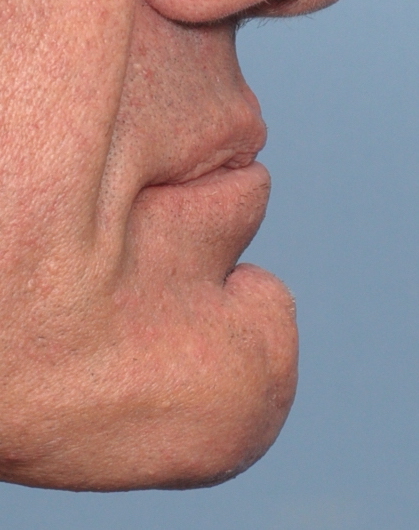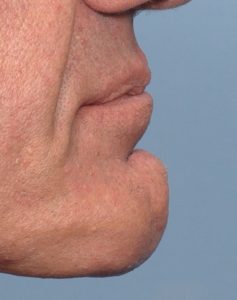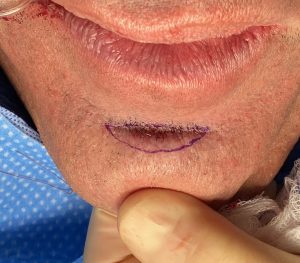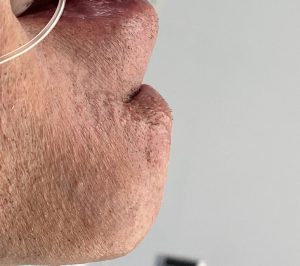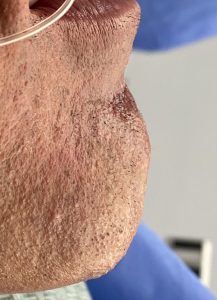Background: While the chin bone draws a lot of aesthetic attention the soft tissue that covers it is often overlooked. This soft tissue coverage, known as the chin pad, is a combination of skin, fibrofatty tissue and muscle. It starts superiorly at the labiomental fold and ends inferiorly on the underside of the chin at the submental crease. This thick soft tissue coverage provides chin bone protection, a source of facial expression and can have numerous distingiushing features in some people. (dimples and clefts)
One of the features of the chin pad that is often viewed negatively is when it is excessive. Known commonly as a ‘fleshy chin’ this is when the size of the soft tissue pad to the bone underneath it becomes imbalanced. A ball of soft tissue sits on the end of the bone that is both mobile and looks disproportionately large. While there are surgical causes of a large chin pad they most commonly occur naturally.
When the chin pad becomes large enough, and often has a profound horizontal projection, the labiomental fold above it becomes deeper. In rare cases the fleshy chin pad gets large enough that it encroaches up over the labiomental fold making it deeper than normal. This can occur when the chin bone underneath is vertically short and the chin pad is displaced upward. This is improved by lengthening of the chin bone which unfurls the upwardly pushed chin pad. But when the chin bone length is normal the excessive chin pad must be reduced directly.
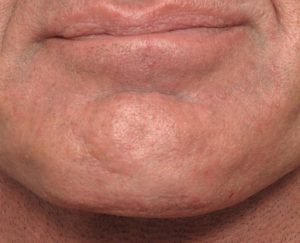
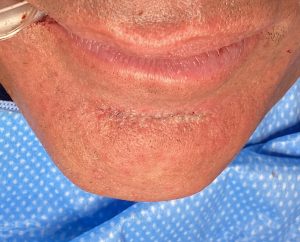
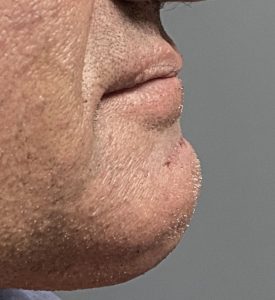
The most common method of reduction of the fleshy chin is done on its bottom end to reduce an excessive horizontal projection. (submental chin pad reduction) But when the chin pad protrusion is at the labiomental fold a direct excision is needed. The labiomental fold provides a good place to put the scar in a natural skin crease particularly in a male.
Case Highlights:
1) The prominent soft tissue chin pad is when it is excessive for the chin bone that it has to cover.
2) An unusual type of a prominent soft tissue chin pad is when it sits higher than the labiomental fold above it.
3) The reduction of a prominent soft tissue chin pad that deepens the labiomental fold with normal chin projection requires excision done directly on it. (transcutaneous approach)
Dr. Barry Eppley
Indianapolis, Indiana

